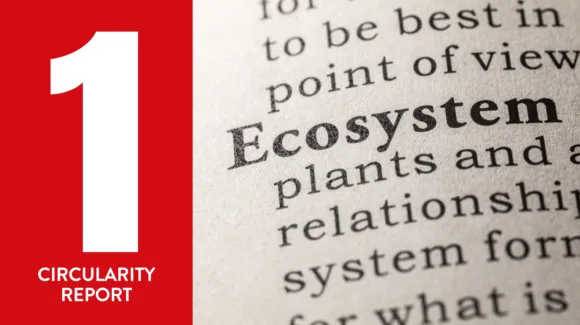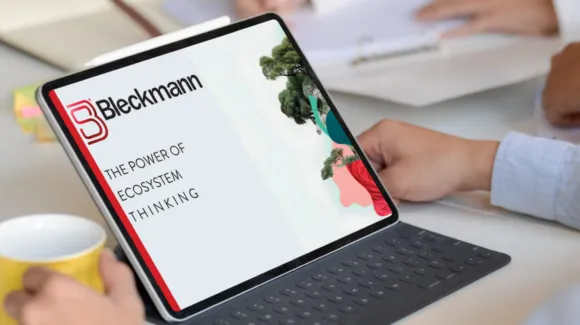If you’ve ever attended a conference on sustainability or circularity, you’ve probably heard the term ‘collaboration’ repeated several times – and for good reason. It’s certainly something we need more of, and something that every stakeholder in the fashion industry should invest in, if we’re going to achieve our social and environmental goals.
However, while collaboration is essential to accelerate change, it can be challenging, especially in an economic environment that encourages winner-takes-all competition. Interestingly, though, over the past year, we’ve started to see companies change their behaviour.
Developing impactful circular partnerships
When The Renewal Workshop started in 2015, there were very few active players in the apparel circularity space. As a result, we had to build not only the operations, but also the technology needed to efficiently collect, renew and resell garments. We had to do it all. And thanks to the dedication of our team, we were able to develop a one-stop shop for brands to get all their repair and renewal services through one comprehensive partner.
In 2022, Bleckmann acquired the Renewal Workshop with the aim of becoming a global leader in circular fashion logistics. Bleckmann is a 160-year-old logistics company with decades of experience serving apparel and lifestyle brands with freight forwarding, warehousing, customs support, fulfilment and supply chain logistics. Our warehousing operations, transportation network and innovations are designed to serve our brand partners optimally so they can deliver on the promises they make to their customers.
As Bleckmann’s core business isn’t in business-to-consumer services, we shifted our focus away from direct-to-customer resale after the acquisition. Instead, we concentrated all our resources on integrating our renewal solutions with various resale channels and technology partners in the market. This allows us to use our expertise in reverse logistics to efficiently collect goods for resale and recycling. We then would work with market-leading re-commerce experts to develop branded resale solutions for our clients.
This decision meant that we had to build up an extensive network of resale and re-commerce partners. Companies can’t act in isolation if we want to successfully develop a circular economy. Rather, collective effort is required to create an effective ecosystem. So, Bleckmann began building relationships with potential re-commerce partners. We’ve learned a lot along the way, and from this experience, we’ve identified seven key steps to building productive circular partnerships.
This is by no means an exhaustive list. The partnering process is organic and involves sharing information, building trust and deepening understanding. It’s best to think of this list as a set of topic areas you’ll cover during the partnership-building phase of your circular fashion journey.
1. Effectively integrate specialisms to multiply value
The goal of a productive circularity partnership is simple: to create a situation where each company is doing what it does best. If each partner can refine and perfect its operations in its core competency areas, when we join forces, we can deliver even more benefits and add serious value. But how do we achieve this?
The first step is to be as clear as possible with your potential partners about your level of experience and capacity when it comes to circularity. By expressing a desire to work together to provide an effective service to customers, you are demonstrating a good faith intention to find workable solutions.
It’s important to keep an open mind at this stage, as the eventual collaboration may look different from what you’d expected. In our experience, some discussions were relatively straightforward – we could easily see whether we had strong alignment and were a good match for each other. In others, there was more of a grey area. In those cases, however, we always showed a strong desire to figure out how we could best pool our knowledge and work efficiently side by side.
2. Clarify your services and business model to facilitate collaboration
To start a productive partnership between two re-commerce companies, it’s important to outline the services you offer and explain your business model. That’s because not every company operates in the same way, so it’s important to manage expectations from the outset. This is especially important when startups work with more established partners, as venture-backed companies have different metrics for growth and revenue than a public or private company might.
It’s also important to be clear about what your services include – and what makes them profitable. This allows all parties to see the unique value that each partner brings to the table. Explaining your offering will help potential partners understand if there’s any overlap with your services. Even if this is the case, it doesn’t mean a partnership won’t work. It just means that more fine-tuning may be required to determine which party will handle which business areas in practice.
3. Build trust with your re-commerce partners to ensure compatibility
In addition to operational compatibility, trust is an essential element of any effective re-commerce partnership. This, again, is often based on the authenticity and transparency of your communications. By openly sharing your company’s values, you can quickly determine whether you’re likely to have an effective working relationship with a potential partner.
Building trust and constructing long-term partnerships can take time. In our experience, it often takes more than a few conversations to establish a desire to work with a new partner. It’s important to prioritise transparency at every stage, even if that means walking away. Sometimes, it’s best just to accept that your services overlap with those of a potential partner and go your separate ways – there’s no shame in admitting that not every partnership is meant to be!
4. Demonstrate operational flexibility to manage overlap
In some cases, overlapping services are identified during discussions and each partner wants to keep a particular service for itself. Often, this specific service makes their product offering stronger or is their main source of revenue. In our experience, this doesn’t necessarily mean the end of your collaboration; it may simply mean you’ve got a few more details to iron out. Here’s our advice:
- Take a case-by-case approach: With one of our partnerships, we realised we had some overlapping or duplicate services. So, we clarified how we’d adapt our operations if a client met certain criteria – and came to an agreement on who would handle which services.
- Establish rules of engagement: To protect the working efficiency of each partnership, we found it beneficial to agree on a predetermined framework with our re-commerce partners. By identifying our core competency areas, depending on what the brand client was looking for, we could easily identify situations where it would make sense to use one partner’s technology or the other’s. Having an agreed-upon framework in place ensures that everyone is on the same page from the outset.
- Think about what’s best for the brand client: At the end of the day, all re-commerce stakeholders have a common goal: we need more fashion brands to develop circular business models. So, it makes sense to build a solution that’s cheaper and more efficient for the brand client. Think about what’s best for those clients when making your decisions, because developing solutions that appeal to brands will make your re-commerce partnership more effective.
5. Start with a concrete client case
Having established productive relationships with re-commerce partners, the next step is to work together to create tailored circular solutions for client brands. We have several amazing partners that we check in with frequently and who are well prepared to collaborate with us when the right client project comes along. In practice, it really does require a client case to finalise the collaboration. Once that happens, all the groundwork of clarifying services and designing optimal workflows makes it much more straightforward to get started on the project.
6. Remove obstacles to collaboration to deliver seamless circular solutions
Once a client case has been identified, it’s time to implement a customised re-commerce solution. In practice, this means collaborating with your re-commerce partners in two main areas: integrating your technical operations and data flows, and ensuring effective and transparent communication. Here are some key points to consider:
- Technical: This is where all the groundwork of identifying each other’s services comes into play. When you can provide engineers with a clear process and data flow, they can then connect the application programming interfaces (APIs) and understand exactly what they need to make the connection work effectively.
- Cohesion and clear communication: Never underestimate the importance of strong communication in delivering successful re-commerce programmes. Part of this process is simply identifying how often the two parties will communicate throughout the integration process and once the programme is up and running – identifying the key responsibilities of each party.
7. Prioritise transparency to simplify problem-solving
Even the best-managed and most organised projects will inevitably encounter unexpected challenges. There may be something you learn at the last minute, a miscommunication, or even an issue that nobody has considered. It’s at these moments that partnerships can be tested, so it’s important to be able to count on an open and honest working relationship. How do you do this? By bringing up any issues quickly and taking ownership of your mistakes. Collective success depends on all parties being focused on their common interests, rather than individual ones. Mutual trust between partners is always best served when issues are identified and addressed at an early stage.
















